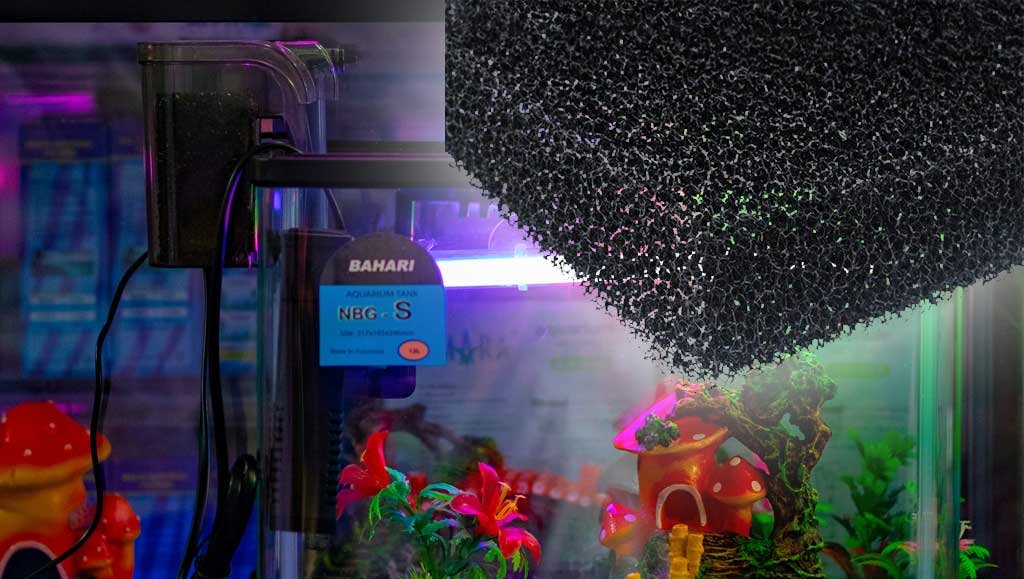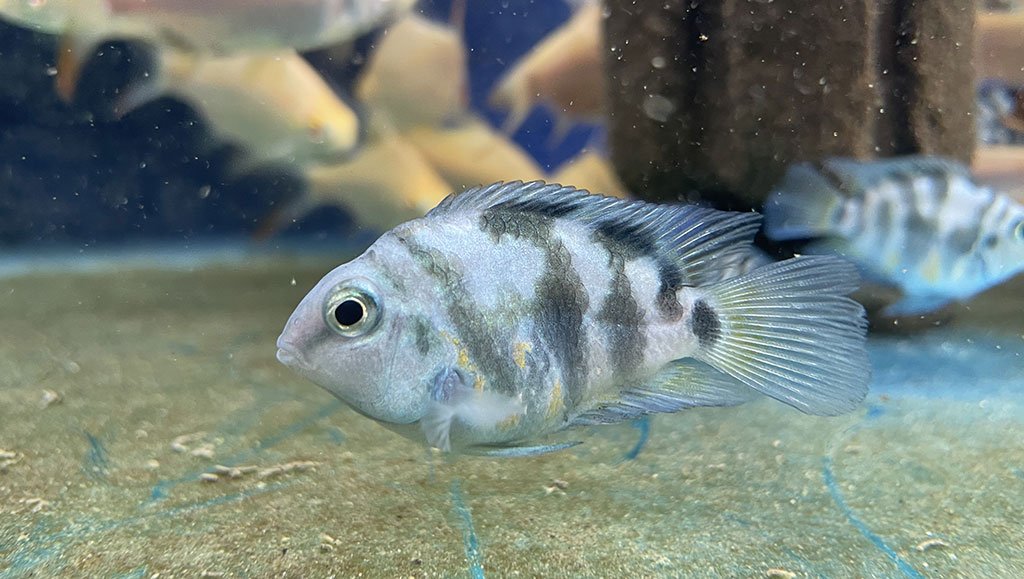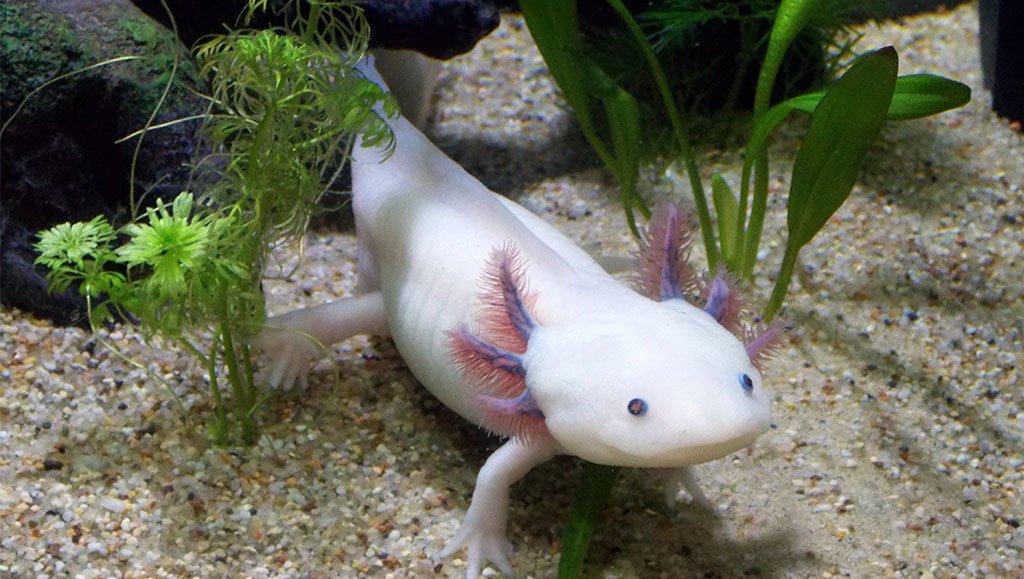If there’s one thing I’ve learned from years of keeping fish, it’s that maintaining a healthy aquarium environment isn’t just about feeding your fish and keeping the tank clean; it’s also about ensuring the equipment that supports your aquatic ecosystem is in top working order. At the heart of this equipment is the humble yet essential aquarium filter pad. Knowing how often to change aquarium filter pads is crucial for the health of your fish and the clarity of your water.
In this article, I’m going to share with you the insights I’ve gained from my experience, arming you with the information you need to make informed decisions about filter maintenance. We’ll explore the signs that indicate it’s time to change your filter pad, the consequences of neglecting this aspect of tank upkeep, and how regularly you should schedule changes to avoid common problems. By the end of this piece, you’ll not only understand the importance of timely filter pad changes but also know how to keep your aquarium thriving with happy, healthy fish.
Key Takeaways:
- Understanding Filter Pad Types: Mechanical, biological, and chemical filter pads each play a crucial role in maintaining water quality and clarity in an aquarium.
- Role of Filter Pads: Filter pads trap debris and particulate matter, preventing water pollution and ensuring a clean environment for fish.
- Impact on Water Clarity and Quality: Well-maintained filter pads contribute to clear water and a healthy aquatic ecosystem by removing excess nutrients and harmful chemicals.
- Factors Influencing Replacement Frequency: Tank size, stocking density, filtration system type, aquarium environment, water parameters, feeding habits, and regular monitoring all affect how often filter pads need replacing.
- Guidelines for Replacement: Manufacturer recommendations, visual inspection, regular maintenance schedules, and adjustments based on tank conditions are essential for determining when to replace filter pads.
- Signs for Replacement: Accumulation of debris, decreased water flow, foul odors, cloudy water, increased ammonia or nitrite levels, physical wear and tear, sudden algae blooms are indicators that filter pads need replacement.
- Steps for Replacement: Power off filtration system, remove old pads, rinse new pads, install them correctly, restart filtration system, monitor water parameters, and observe fish behavior and water clarity.
- Tips for Extending Lifespan: Pre-filtering water, maintaining intake tubes and impellers, avoiding overfeeding, rotating multiple pads, cleaning pads between replacements, monitoring stocking levels, and using beneficial bacteria supplements can extend the lifespan of filter pads.
- Common Mistakes to Avoid: Replacing pads too frequently or infrequently, neglecting to rinse new pads, improper installation, disrupting beneficial bacteria colonies, ignoring other filter components, and forgetting to check water parameters after replacement are common mistakes to avoid.
- Opinion on Replacement Frequency: Changing filter pads every 4 to 6 weeks strikes a balance between maintaining water quality and preserving beneficial bacteria colonies, but observation and adjustment based on tank conditions are essential.
Understanding the Role of Filter Pads
Types of Filter Pads: Mechanical, Biological, and Chemical
From my personal aquarium-keeping journey, I’ve come to appreciate the significance of understanding the different types of filter pads: mechanical, biological, and chemical. Each plays a pivotal role in the aquarium ecosystem. Mechanical filter pads are your frontline defense, trapping particulate matter and debris. Biological ones are the unsung heroes, housing beneficial bacteria that breakdown toxic ammonia and nitrite into less harmful nitrates. Chemical filter pads, often infused with activated carbon or other adsorbents, tackle dissolved pollutants and odors, ensuring your water stays crystal clear.
Function of Filter Pads in Trapping Debris and Particles
The role of filter pads in trapping debris cannot be overstated. They act like a sieve, capturing everything from uneaten food to plant matter, preventing these from decaying and polluting your tank water. In my experience, maintaining a clean mechanical filter pad is the key to preventing the buildup of harmful substances and ensuring your fish have a clean environment to thrive in.
Impact of Filter Pads on Water Clarity and Quality
Water clarity and quality are directly influenced by the state of your filter pads. A well-maintained filter pad ensures the water in your aquarium is free from excess nutrients and harmful chemicals, which can lead to algae outbreaks and jeopardize the health of your aquatic life. Throughout my years of fishkeeping, changing the filter pads regularly has been paramount to maintaining pristine water conditions.
Regular Maintenance and Monitoring
Staying on top of filter pad maintenance and monitoring their condition has been a game-changer for me. It’s not just about changing pads at a set interval; it’s about observing the performance and condition of the pad and adjusting your maintenance schedule accordingly. Sometimes, after heavy feeding or a tank redesign, your filtration system might need a little extra attention.
Advanced Tips for Optimizing Filter Pad Performance
Over the years, I’ve picked up a few tricks to get the most out of filter pads. One such tip is to rinse mechanical pads in tank water during changes to preserve beneficial bacteria without compromising their filtering capability. For those with planted tanks, customizing your filtration to include a pre-filter sponge can extend the life of your filter pads by catching large debris before it reaches the main filter system.
Factors Influencing Filter Pad Replacement Frequency
In my years of aquarium maintenance, I’ve learned that several factors significantly influence how often you need to replace your filter pads. Sharing my experiences may help you gauge the replacement frequency for your setup.
Tank Size and Stocking Density
Larger aquariums or those with a high stocking density tend to accumulate debris and waste more quickly than smaller or sparsely populated tanks. In my 50-gallon community aquarium, I find myself checking and sometimes replacing filter pads more frequently than in my 20-gallon shrimp tank. It’s all about the bioload – more fish means more waste.
Type of Filtration System and Filter Media Used
The filtration system you employ plays a huge role in how often filter media needs replacing. In my experience, sponge filters and hang-on-back filters with mechanical media require more frequent attention. The specific filter media you choose, whether it’s sponge, fiber, or pads infused with active substances, also determines longevity. For instance, sponge filters in my fry tanks need cleaning almost weekly due to the high amounts of particulate matter they catch.
Aquarium Environment: Freshwater vs. Saltwater, Planted vs. Non-Planted
Freshwater and saltwater tanks pose different challenges for filter pads. Saltwater setups, especially reef tanks, often demand more from filtration due to the complex balance of nutrients and particulates. Planted tanks, on the other hand, might offer a little leeway as plants absorb some of the nutrients, though decaying plant matter can quickly clog filter pads. My planted freshwater tanks typically require less frequent changes compared to my marine aquarium.
Water Parameters: Ammonia, Nitrite, and Nitrate Levels
Close monitoring of ammonia, nitrite, and nitrate levels can provide valuable insights into when it’s time to change your filter pads. A sudden spike in these parameters might indicate that your current filter media is saturated and needs replacing. I’ve had instances where unexpected nitrate spikes signaled it was time for a filter pad change sooner than I had planned.
Feeding Habits and Types of Food Used
The type of food you give your fish and how you feed them can also impact filter maintenance needs. Overfeeding is a common mistake that leads to excess waste, quickly clogging filter pads. I’ve learned that feeding pellets that sink slowly and are easily consumed helps reduce waste, thereby extending the life of my filter pads.
Observation and Regular Testing
Ultimately, your best tool is regular observation and water testing. Even with guidelines, each tank is unique, and staying attuned to changes in water clarity, fish behavior, and water chemistry will guide your maintenance schedule more accurately than any standard recommendation can. Regular testing has often alerted me to the need for filter maintenance before visible signs of trouble appear.
General Guidelines for Changing Filter Pads
Over my fishkeeping journey, I’ve realized the importance of staying proactive with filter pad maintenance to ensure a healthy aquarium. Here’s a breakdown of general guidelines I follow for changing filter pads, based on personal experience and observations.
Manufacturer Recommendations and Guidelines
First off, always start with the manufacturer’s recommendations for your specific filter. These guidelines provide a baseline for maintenance intervals. However, treat these as starting points rather than hard rules, since actual needs can vary based on your aquarium’s unique conditions.
Observational Cues: Visual Inspection and Water Clarity
Learning to read the signs your aquarium gives you is pivotal. Visual cues like water clarity and the amount of debris or buildup on the filter pad are direct indicators it’s time for a change. I’ve found that even before the recommended replacement time, my tank often signals when it’s not getting the filtration it needs.
Regular Maintenance Schedule: Weekly, Bi-Weekly, or Monthly
Setting up a regular maintenance schedule has been a game-changer for me. Depending on the tank’s size, stocking level, and type (freshwater or saltwater), I do a general check weekly, with a more thorough inspection bi-weekly or monthly. This doesn’t always mean changing the filter pad each time, but it helps in keeping a close eye on its condition.
Adjusting Replacement Frequency Based on Tank Conditions and Stocking Levels
One of the most critical lessons I’ve learned is that “one size does not fit all” when it comes to maintenance. Densely stocked tanks, or those with larger fish species, might require more frequent filter changes than a lightly stocked tank. Similarly, tanks with active, messy feeders might see filter pads clogging up much quicker.
Effects of Seasonal Changes
Interestingly, seasonal changes can also impact your filter’s performance. During warmer months, I’ve observed an increase in algae growth and higher metabolic rates in fish, leading to more waste. This demands more frequent filter changes. Conversely, in cooler months, the change frequency might reduce slightly.
Response to Treatments and Medications
Lastly, if you’re treating your tank with medications or water conditioners, be attentive to their impact on your filter media. Certain treatments can significantly reduce filter efficiency, necessitating a quicker replacement to ensure the health and clarity of your water.
Signs that Filter Pads Need Replacement
Over time, I’ve pinpointed some unmistakable signs that indicate when my filter pads are pleading for a replacement. These cues have saved my tanks from potential disaster more than once. Here’s what I’ve learned to watch out for:
Accumulation of Debris and Waste on Filter Pad Surface
The most obvious sign is the visible accumulation of debris and waste on the surface of the filter pad. When the pad appears choked with detritus, its efficiency in trapping more waste diminishes. I’ve noticed that waiting too long to replace a clogged filter pad can lead to water quality issues that are much harder to reverse.
Decreased Water Flow and Filter Efficiency
Another telltale sign is a noticeable decrease in water flow and filter efficiency. When my filter pads are overdue for a change, the flow from the filter outlet visibly lessens. It’s like the tank is trying to breathe through a straw. This reduction in flow means oxygen and nutrient distribution is hampered, which can stress your aquatic life.
Foul Odors or Cloudy Water Despite Regular Maintenance
At times, despite sticking to a routine maintenance schedule, I’ve encountered foul odors or persistent cloudy water. This was a red flag signaling that my filter pad could no longer keep up with the waste removal. Odor and cloudiness are signs of excess organic material in the water, which can rapidly deteriorate water quality.
Increased Levels of Ammonia or Nitrite in Water Testing Results
Regular water testing is a crucial part of my maintenance regimen. A sudden uptick in ammonia or nitrite levels often clues me in that my filter media is saturated and no longer effectively processing waste. These toxic compounds can have harmful effects on fish and invertebrates, so immediate action is necessary.
Visual Signs of Wear and Tear on the Filter Pad
Besides the more functional signs, physical deterioration of the filter pad itself is a clear indicator that it’s time for a replacement. If the pad starts to disintegrate, loses its structure, or shows significant wear and tear, it’s definitely past its prime. I’ve learned that these physical changes can drastically reduce a filter’s effectiveness.
Sudden Algae Bloom
Lastly, an unexpected algae bloom has sometimes been my cue that the filter pads need changing. Excessive nutrients in the water, which should have been captured by the filter pad, can fuel rapid algae growth. Keeping an eye out for this sign has helped me preempt potential imbalance in my tanks.
Steps to Replace Aquarium Filter Pads
After recognizing the signs that my aquarium filter pads need replacing, the actual process of swapping them out is something I’ve refined over time. Here’s a step-by-step guide I personally follow to ensure everything goes smoothly and my aquatic friends remain happy and healthy.
Powering Off Filtration System and Draining Water if Necessary
First things first, I always make sure to shut off the power to the filtration system. Safety is paramount, both for me and my aquatic inhabitants. In some instances, especially if I’m also doing a water change, I’ll slightly drain the tank to reduce the risk of spilling or overflowing. This step makes accessing the filter system easier and safer.
Removing Old Filter Pads from Filter Chamber
With the system powered down, I carefully remove the filter chamber cover and take out the old filter pads. Sometimes, they’re so gunked up with debris that it’s a relief to finally get them out! I handle them carefully to avoid spilling detritus back into the tank or the surrounding area.
Rinsing New Filter Pads in Dechlorinated Water to Remove Excess Fibers
Before installing the new pads, I rinse them gently in dechlorinated water. This step is something I didn’t realize was necessary at first, but it helps remove any loose fibers or dust from manufacturing. It’s a simple step that can really help maintain water clarity after a filter pad change.
Installing New Filter Pads According to Manufacturer Instructions
Installing the new filter pads properly is crucial. I always refer back to the manufacturer’s instructions for my specific filter model to ensure I’m positioning them correctly. Ensuring that the pads fit snugly without warping or bending is key to avoiding bypass flow where water could go around rather than through the pad.
Restarting Filtration System and Monitoring for Proper Functioning
After everything is securely in place, I restart the filtration system. I keep a close eye (and ear) on the system for the next few hours to make sure water is flowing correctly and there are no leaks or unusual noises. Sometimes, it takes a bit for the system to prime and get running smoothly again.
Checking Water Parameters Within 24 Hours
I’ve found it wise to test the water parameters within 24 hours after changing the filter pads. This helps me ensure that the new pads are effectively removing waste and that there hasn’t been a spike in ammonia or nitrite levels due to the disruption.
Observing Fish Behavior and Water Clarity
Lastly, I closely observe my fish and the overall water clarity in the days following the filter change. Happy, active fish and clear water are good indicators that the new filter pads are doing their job well.
Replacing filter pads doesn’t have to be a daunting task. With a bit of preparation and attention to detail, you can ensure a smooth transition and maintain a healthy aquarium environment.
Tips for Extending the Lifespan of Filter Pads
Through trial, error, and a bit of research, I’ve discovered several methods that effectively extend the life of aquarium filter pads. Implementing these strategies not only saves money but also keeps tank maintenance manageable and promotes a healthier environment for aquatic life. Here’s what has worked well for me:
Pre-Filtering Water Before it Enters the Filter System
One of my go-to strategies is pre-filtering the water before it even reaches the main filter system. By using a sponge or mesh on the intake, larger debris gets caught upfront. This simple step significantly reduces the burden on the filter pads themselves, allowing them to focus on finer particles and last significantly longer.
Regular Maintenance of Filter Intake Tubes and Impellers
Maintaining the filter intake tubes and impellers makes a huge difference. By regularly cleaning these components, I ensure that water flow remains strong and efficient, preventing unnecessary strain on the filter pads. It’s a bit of work but pays off in the long run with smoother operation and less frequent need for filter pad replacements.
Avoiding Overfeeding and Excessive Organic Waste Buildup
I can’t stress enough how important it is to avoid overfeeding. Excessive food not only leads to water quality issues but also clogs filter pads much quicker. I’ve learned to feed my fish in small, controlled portions, ensuring they consume all the food and thus minimizing waste.
Rotating Multiple Filter Pads to Extend Usage Time
Rotating between multiple filter pads has been a game changer for me. When one pad starts to show signs of wear, I switch it out, clean it, and give it a rest. This rotation means each pad gets a break from the constant workload, extending its effective lifespan and ensuring I always have a clean pad in reserve.
Cleaning Filter Pads Between Replacements to Remove Loose Debris
Gently cleaning filter pads between full replacements can extend their life. I carefully rinse them in tank water (to avoid chlorine and chemicals from tap water) to remove loose debris. This approach keeps them functioning longer, although it’s crucial not to overdo it as this can damage the fibers in the pads.
Monitoring and Adjusting Stocking Levels
Another aspect I’ve found crucial is monitoring and adjusting the stocking levels in my tanks. Overstocking leads to quicker waste buildup, putting additional pressure on the filter pads. By keeping a balanced ecosystem, I reduce the load on the filtration system and, by extension, on the filter pads.
Utilizing Beneficial Bacteria Supplements
Lastly, using beneficial bacteria supplements has been beneficial. These supplements help break down waste more efficiently, reducing the potential clog and wear on filter pads. It’s a natural way to keep the water cleaner and the filter pads functioning optimally for longer.
Common Mistakes to Avoid When Changing Filter Pads
Throughout my aquarium-keeping journey, I’ve learned a good deal about maintaining a healthy tank environment, especially the do’s and don’ts of changing filter pads. From my experiences and the lessons I’ve gathered, I want to share some common mistakes you might be making—a heads up I wish I had when I started. Here’s what to be mindful of:
Replacing Filter Pads Too Frequently or Infrequently
In my earlier days, I struggled to find the balance in replacing filter pads—the fear of doing it too often or not often enough is real. Replacing them too frequently can disrupt your tank’s beneficial bacteria colonies, whereas waiting too long may allow waste to accumulate, impairing water quality. I’ve learned it’s about observing your tank’s specific needs and finding that sweet spot.
Neglecting to Rinse New Filter Pads Before Installation
I cannot overstate this—rinsing your new filter pads in dechlorinated water is crucial. It’s a step I overlooked once, and the result was a cloud of unwanted particulates in my tank, distressing my fish and me equally. This simple act removes any residual dust or fibers, ensuring a clean start.
Overlooking Proper Installation and Alignment of Filter Pads
There was a time I thought “close enough” was good enough for positioning filter pads. Well, I learned the hard way that improper installation can lead to bypass flow, where unfiltered water skips the pad altogether. Ensuring that filter pads are snug and correctly aligned according to the manufacturer’s instructions is pivotal for optimal filtration.
Disrupting Beneficial Bacteria Colonies During Filter Pad Changes
One thing I underestimated was the role of beneficial bacteria in the health of my aquarium. Changing all filter pads at once can significantly disrupt these vital colonies. Now, I change them in stages or ensure to transfer some of the beneficial bacteria to the new pad, keeping my tank’s ecosystem stable.
Ignoring the Condition of Other Filter Components
What I realized over time is that the filter pads aren’t the only parts that matter—ignoring the condition of other filter components can be just as detrimental. Ensuring that intake tubes, impellers, and other parts are also cleaned and maintained is vital for the whole system’s efficiency.
Forgetting to Check Water Parameters After a Change
Early on, I made the error of not checking water parameters after changing the filter pad, assuming everything was fine. It’s essential to monitor these parameters closely after a change to ensure the tank is still a safe environment for its inhabitants.
My Opinion on How Often to Change Aquarium Filter Pads
From my own experience and the many lessons learned along the way, I believe in a balanced approach to changing aquarium filter pads. Striking the right timing isn’t just about setting a rigid schedule but observing and reacting to your tank’s unique needs. In my tanks, I’ve found that changing the filter pads every 4 to 6 weeks hits the sweet spot. This interval keeps the water quality high without disrupting the beneficial bacteria colonies too much. However, always keep an eye on your tank’s clarity and the filter pads’ condition. Remember, every aquarium is a world of its own, and what works for one might need adjustment for another. Your best tool is your observation and understanding of your aquatic ecosystem.




